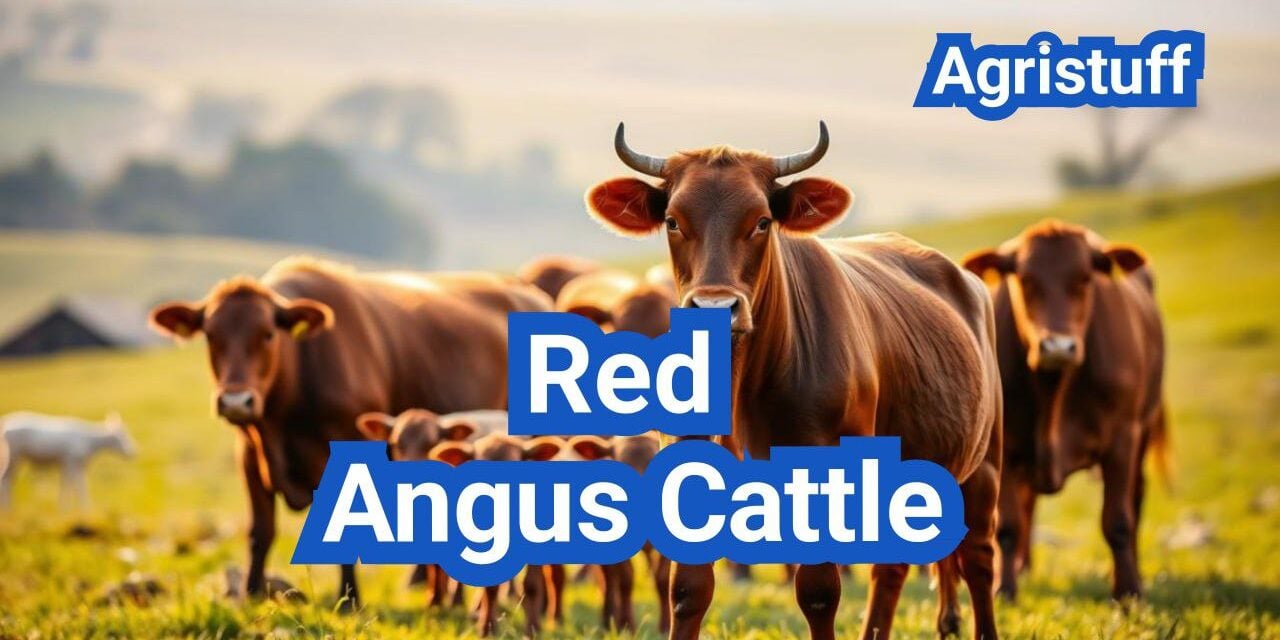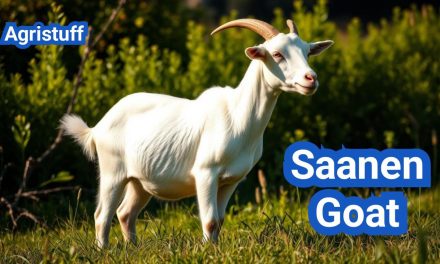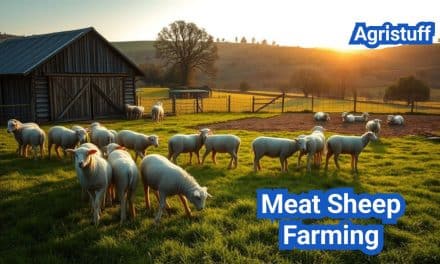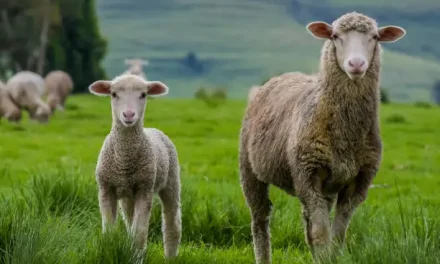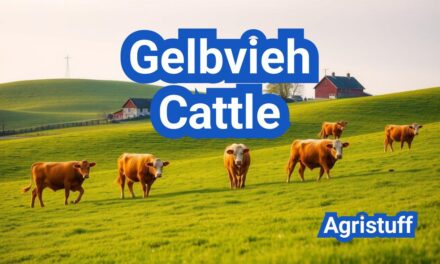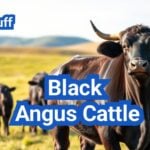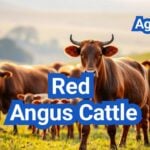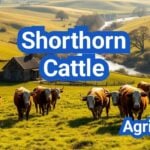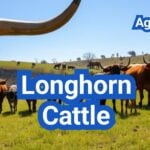The Red Angus breed has a rich history that dates back to Scotland and England, known for its distinctive red color and high-quality beef.
Originating from the same roots as the black Angus ( Angus Cattle ) , the red variant has gained popularity due to its unique appearance and desirable traits. Red Angus are recognized for their hardiness, fertility, and the quality of their beef, making them a preferred choice among cattle breeders and consumers alike.
This introduction provides an overview of the Red Angus, covering their history, characteristics, and uses, setting the stage for a detailed exploration in the subsequent sections.
Key Takeaways
- Red Angus cattle originated from Scotland and England.
- They are known for their distinctive red color and high-quality beef.
- The breed is recognized for its hardiness and fertility.
- Red Angus are a preferred choice among cattle breeders and consumers.
- The breed has gained popularity due to its unique appearance and desirable traits.
The Origins and History of Red Angus Cattle
Red Angus cattle share a common ancestry with Aberdeen Angus, with their distinct red color resulting from a recessive gene. This genetic trait has been a defining characteristic of the Red Angus breed, which has a rich history that spans centuries.
Early Development in Scotland
The early development of Red Angus cattle is traced back to Scotland, where they originated from the same stock as the Aberdeen Angus. The red coloration, though initially considered a disqualification for registration, became a hallmark of the breed. Scottish farmers valued the hardiness and quality of these cattle, laying the foundation for their future popularity.
Key Characteristics:
- Hardiness in rugged climates
- High-quality beef production
- Genetic diversity within the Angus lineage
| Characteristic | Description | Benefit |
|---|---|---|
| Origin | Scotland | Hardy and robust |
| Color | Red | Distinctive appearance |
| Genealogy | Aberdeen Angus lineage | High-quality beef |
Introduction to North America
Red Angus cattle were introduced to North America, where they gained popularity among ranchers for their hardiness and beef quality. The breed’s adaptability to various climates and management systems made it an attractive choice for American ranchers.
The establishment of the Red Angus Association of America in 1954 further facilitated the breed’s growth, providing a registry and promoting the breed’s advantages. Today, Red Angus cattle are recognized for their premium beef production and are a significant part of the cattle industry in North America.
Red Angus Cattle: Breed Overview and Significance

Red Angus cattle have been gaining attention in the agricultural community due to their unique characteristics and benefits. The breed has been steadily growing in popularity, and understanding its significance is crucial for ranchers and cattle enthusiasts alike.
Distinguishing Red Angus from Black Angus
One of the primary distinguishing features of Red Angus cattle is their red coat color, which sets them apart from the more common Black Angus breed. While both breeds share many similarities in terms of their origin and characteristics, the red coloration is a result of a genetic variation. This genetic difference does not affect the quality of the beef or the hardiness of the cattle, making Red Angus a viable alternative to Black Angus for many ranchers.
The Rise in Popularity Among American Ranchers
Red Angus cattle have gained significant popularity among American ranchers due to their hardiness, ease of handling, and high-quality beef. The breed’s adaptability to various climates and management systems has made it an attractive choice for ranchers across the United States. The breed’s maternal traits and carcass quality are particularly valued, contributing to its growing popularity in the cattle industry.
As the demand for high-quality beef continues to rise, the significance of Red Angus cattle is likely to grow. Their unique characteristics, combined with their adaptability and the quality of their beef, position them as a significant player in the American cattle industry.
Physical Characteristics of Red Angus Cattle
Red Angus cattle are known for their robust physical characteristics, making them a preferred choice for many cattle producers. Their physical attributes contribute significantly to their adaptability and productivity.
Body Structure and Size
Red Angus cattle are characterized by their medium size and well-proportioned body structure. They typically have a muscular build, which is conducive to their use in beef production. The breed’s moderate size makes them manageable for a variety of farming operations. Their sturdy build and balanced physique enable them to thrive in different environmental conditions.
The average weight of mature Red Angus cows ranges from 900 to 1,200 pounds, while bulls can weigh between 1,800 to 2,200 pounds. This size range is optimal for both pasture-based and grain-finishing systems.
Coat Color and Distinctive Features
One of the most distinctive features of Red Angus cattle is their red coat color, which varies from a deep cherry red to a light reddish-brown. This characteristic red coloration is a result of genetic factors and is a key identifier of the breed. The red coat color does not affect the quality of the beef but is a significant trait for breed recognition.
Polled Genetics and Horn Development
Red Angus cattle are predominantly polled, meaning they are genetically hornless. The polled trait is a dominant characteristic in Red Angus genetics, making them easier to manage and reducing the risk of injury to both the animals and handlers. The absence of horns also eliminates the need for dehorning procedures, which can be a significant advantage in cattle management.
The polled genetics of Red Angus cattle are a result of selective breeding practices that have emphasized this trait over generations. This characteristic, combined with their other physical attributes, makes Red Angus a practical and popular choice among cattle producers.
Temperament and Behavioral Traits

Red Angus cattle are renowned for their exceptional temperament, making them a favorite among ranchers. Their calm and docile nature simplifies handling and care, reducing stress for both the animals and the handlers.
Docility and Handling Ease
One of the standout characteristics of Red Angus cattle is their docility. This breed is known for being easy to handle, which is a significant advantage for ranchers, especially during routine operations such as vaccinations and hoof trimming. The docile nature of Red Angus cattle also contributes to a safer working environment, as they are less likely to exhibit aggressive behavior.
Easy handling is crucial for efficient ranch management, and Red Angus cattle excel in this aspect. Their calm demeanor allows ranchers to manage their herds more effectively, saving time and reducing labor costs.
Maternal Instincts and Calf-Rearing Behavior
Red Angus cattle are also recognized for their strong maternal instincts. Cows are attentive to their calves, ensuring they are well-cared for and protected. This strong maternal bond is vital for the health and well-being of the calves, as it promotes better growth rates and reduces mortality.
The calf-rearing behavior of Red Angus cows is another aspect that contributes to their popularity. Cows are known to be protective and nurturing, creating a stable environment for their calves to thrive. This trait is particularly valuable in extensive ranching operations where close supervision is not always possible.
How to Feed Red Angus Cattle Properly
Feeding Red Angus cattle effectively requires a comprehensive understanding of their nutritional needs. A well-planned feeding strategy is crucial for maintaining their health, productivity, and overall performance.
Grazing and Pasture Management
Grazing management is a critical aspect of feeding Red Angus cattle. Rotational grazing is a recommended practice that allows pastures to recover, maintaining their quality and quantity. This method involves dividing pastures into smaller sections and rotating the cattle to avoid overgrazing.
Effective pasture management also includes monitoring forage quality and quantity, ensuring that the cattle have access to nutritious grasses and legumes. Regular soil testing and fertilization as needed can help maintain pasture health.
Supplemental Feeding Guidelines
Supplemental feeding is necessary when grazing alone cannot meet the nutritional needs of Red Angus cattle. The type and amount of supplement depend on factors such as the cattle’s age, sex, and production stage.
Winter Feeding Protocols
During winter, Red Angus cattle may require additional feed to compensate for the lack of high-quality forage. Hay, silage, or grain supplements can be used to meet their nutritional needs.
Summer Feeding Adjustments
In the summer, cattle may need minerals and vitamins to complement the nutrients available in the pasture. Ensuring access to fresh water and adjusting feeding according to pasture quality is essential.
Water Requirements and Access
Adequate water access is vital for the health and productivity of Red Angus cattle. Cattle need clean, fresh water at all times, and water quality should be regularly monitored.
Ensuring that water sources are easily accessible can help reduce stress and improve overall cattle well-being.
Health Management for Red Angus Cattle

The health management of Red Angus cattle involves several key practices that ensure their overall well-being. Effective health management is critical for maintaining the productivity and longevity of the herd.
Preventative Care Protocols
Preventative care is a cornerstone of health management for Red Angus cattle. This includes implementing a thorough vaccination schedule and conducting regular health checks.
Vaccination Schedule
A well-planned vaccination schedule is essential to protect Red Angus cattle from common diseases. Vaccinations should be administered according to the manufacturer’s instructions and tailored to the specific needs of the herd.
Regular Health Checks
Regular health checks help in early detection of diseases and parasites, allowing for timely intervention. These checks should include monitoring for signs of illness, injury, or stress.
Common Health Issues and Treatments
Red Angus cattle can be susceptible to various health issues, including respiratory diseases and parasites. Understanding these common issues and their treatments is vital for effective health management.
Parasite Control Strategies
Parasite control is a critical aspect of health management for Red Angus cattle. Strategies include rotational grazing, the use of parasite control medications, and monitoring for parasite resistance.
By implementing these health management practices, farmers can significantly improve the health and productivity of their Red Angus cattle.
Breeding Red Angus Cattle: Step-by-Step Guide

To breed Red Angus cattle effectively, one must consider several key factors, including genetics, breeding methods, and calving management. Breeding Red Angus cattle is a complex process that requires careful planning, attention to detail, and a commitment to best practices to ensure the health and quality of the herd.
Selecting Optimal Breeding Stock
Selecting the right breeding stock is crucial for the success of a Red Angus breeding program. This involves evaluating potential breeding animals based on their genetic merit, physical characteristics, and performance records. Key factors to consider include:
- Genetic Diversity: Ensuring a diverse gene pool to avoid inbreeding and maintain the overall health of the herd.
- Pedigree: Examining the ancestry of potential breeding animals to predict their genetic potential.
- Physical Characteristics: Assessing traits such as body structure, size, and coat color to ensure they meet breed standards.
- Performance Records: Reviewing records on growth rate, fertility, and other relevant traits to identify superior genetics.
Breeding Methods: AI vs. Natural Service
Red Angus breeders can choose between artificial insemination (AI) and natural service breeding methods. Each method has its advantages and considerations:
- Artificial Insemination (AI): Offers the ability to access superior genetics from a wide range of sires, potentially accelerating genetic progress.
- Natural Service: Involves introducing a bull to the cow herd, which can be less labor-intensive but may result in less genetic progress if the bull is not of high genetic merit.
The choice between AI and natural service depends on the breeder’s goals, resources, and management capabilities.
Managing the Calving Season
Effective calving season management is critical for minimizing losses and ensuring the health of both cows and calves. This involves:
Pre-Calving Preparation
Preparing for the calving season involves ensuring that facilities are clean and safe, having necessary supplies on hand, and monitoring the nutritional status of pregnant cows.
Calving Assistance Techniques
Understanding when and how to assist during calving is crucial. This includes recognizing signs of labor, knowing when intervention is necessary, and having the skills to perform assisted deliveries safely.
By carefully managing these aspects, Red Angus breeders can improve the efficiency and success of their breeding programs.
Genetic Improvement Strategies for Red Angus
Improving the genetic traits of Red Angus cattle is essential for breeders seeking to optimize their herd’s potential. Genetic improvement strategies enable breeders to enhance desirable characteristics such as growth rate, fertility, and disease resistance, ultimately leading to increased productivity and profitability.
Understanding and Utilizing EPDs
Expected Progeny Differences (EPDs) are a crucial tool in the genetic improvement of Red Angus cattle. EPDs provide breeders with a measure of a sire’s or dam’s genetic potential for specific traits, allowing for more informed breeding decisions. By utilizing EPDs, breeders can predict the expected performance of an animal’s offspring, thereby accelerating genetic progress within their herd.
Key EPDs to Consider:
- Birth Weight EPD: Indicates the expected birth weight of a sire’s or dam’s calves.
- Weaning Weight EPD: Predicts the weaning weight of offspring, reflecting maternal and growth traits.
- Yearling Weight EPD: Measures the expected yearling weight, indicating growth potential.
- Milk EPD: Estimates the maternal ability of a dam, influencing calf growth.
Genetic Defects to Monitor
While pursuing genetic improvement, it’s critical to monitor for genetic defects that can negatively impact the health and viability of Red Angus cattle. Common genetic defects include conditions such as arthrogryposis multiplex (AM) and other congenital abnormalities. Breeders should implement rigorous selection and testing protocols to minimize the occurrence of these defects.
| Genetic Defect | Description | Impact |
|---|---|---|
| Arthrogryposis Multiplex (AM) | Congenital condition characterized by joint deformities. | Severe mobility issues, often resulting in euthanasia. |
| Congenital Heart Defects | Abnormalities in heart structure present at birth. | Can lead to reduced viability and increased mortality. |
Strategic Crossbreeding Programs
Strategic crossbreeding can be an effective method for leveraging the genetic strengths of Red Angus cattle while introducing desirable traits from other breeds. By carefully selecting breeds that complement the Red Angus, breeders can enhance overall herd performance, improve heterosis, and increase genetic diversity.
Benefits of Crossbreeding:
- Hybrid vigor, leading to improved growth rates and fertility.
- Increased genetic diversity, reducing the risk of inherited disorders.
- Opportunity to introduce desirable traits from other breeds.
Commercial Uses and Market Value

The commercial value of Red Angus cattle is multifaceted, encompassing premium beef, seedstock operations, and show cattle. This versatility makes them highly valuable in various sectors of the cattle industry.
Premium Beef Production
Red Angus cattle are prized for their ability to produce high-quality beef. Their genetics contribute to marbling, tenderness, and flavor, making their beef highly sought after by consumers and restaurants.
Meat Quality Characteristics
The meat from Red Angus cattle is known for its excellent marbling, which enhances tenderness and flavor. This characteristic is crucial for premium beef products that command higher prices in the market.
Market Premiums for Red Angus Beef
Due to their superior meat quality, Red Angus beef often commands a premium price. Producers can benefit from this by marketing their beef as a premium product, appealing to consumers willing to pay more for higher quality.
Seedstock Operations
Red Angus cattle are also valuable in seedstock operations, where they are used to breed other cattle to improve their genetics. Their superior traits are passed on, enhancing the overall quality of the herd.
Show Cattle Potential and Requirements
In addition to their commercial beef and breeding value, Red Angus cattle are competitive in show rings. Their muscular structure, conformation, and overall appearance make them ideal for showing. However, success in the show ring requires careful selection, nutrition, and training.
Overall, the commercial uses of Red Angus cattle are diverse, ranging from premium beef production to seedstock operations and show cattle. Their market value is significantly influenced by these factors, making them a valuable asset for cattle producers.
Establishing a Red Angus Operation

Establishing a Red Angus cattle operation requires meticulous planning and a thorough understanding of the land, facilities, and equipment needed.
To ensure the success of your Red Angus operation, it is crucial to assess your land and facility requirements carefully. This includes evaluating the quality and quantity of pasture available for grazing.
Land and Facility Requirements
Pasture Needs
Adequate pasture is essential for a Red Angus operation. The ideal pasture should have high-quality forage and adequate water supply. Consider factors such as soil type, climate, and vegetation when selecting pasture land.
Handling Facilities Design
Well-designed handling facilities are critical for efficient cattle management. Consider the layout and design of your handling facilities to ensure they meet your needs. Key features include crowding pens, chutes, and loading ramps.
Essential Equipment Checklist
The following equipment is essential for a Red Angus operation:
- Tractors and plows for land preparation
- Fencing materials for pasture management
- Watering systems for cattle hydration
- Handling equipment, such as chutes and squeeze chutes
Staffing and Labor Considerations
Adequate staffing is vital for the success of your Red Angus operation. Consider hiring experienced ranch hands or training your existing staff to manage the day-to-day activities of your operation.
By carefully planning and executing your Red Angus operation, you can ensure a successful and profitable cattle ranching business.
Marketing Your Red Angus Cattle Effectively

Marketing Red Angus cattle effectively involves a combination of building a reputable brand, utilizing appropriate sales strategies, and obtaining relevant industry certifications. To stand out in the competitive cattle market, ranchers must adopt a multi-faceted marketing approach.
Building a Reputable Brand
Establishing a strong brand identity is crucial for Red Angus cattle producers. This involves developing a unique brand image that reflects the quality and characteristics of the cattle. Ranchers should focus on creating a recognizable logo, consistent branding across marketing materials, and a compelling narrative about their cattle’s breeding and raising practices.
Sales Channels and Strategies
Identifying the right sales channels is vital for reaching potential buyers. Red Angus cattle can be marketed through various channels, including online marketplaces, cattle auctions, and private treaty sales. Producers should also consider leveraging social media and other digital platforms to showcase their cattle and connect with potential buyers.
Leveraging Industry Resources and Certifications
Utilizing industry resources and obtaining relevant certifications can significantly enhance the marketability of Red Angus cattle. The Red Angus Association of America offers various programs and certifications that can add value to a producer’s cattle. By leveraging these resources, ranchers can demonstrate their commitment to quality and breed standards, thereby attracting more buyers.
By focusing on brand building, strategic sales channels, and industry certifications, Red Angus cattle producers can effectively market their cattle and achieve a competitive edge in the market.
Economic Analysis of Red Angus Ranching

For those venturing into Red Angus cattle production, a thorough economic analysis is crucial for long-term success. This involves understanding the initial investment requirements, ongoing operational costs, and factors that influence profitability.
Initial Investment Requirements
The initial investment for starting a Red Angus ranching operation includes costs associated with land acquisition or leasing, infrastructure development, and purchasing the initial herd. The cost of land can vary significantly depending on location, quality, and size. Infrastructure costs include fencing, water supply systems, and handling facilities. The quality and number of the initial breeding stock also significantly impact the initial investment.
Operational Costs Breakdown
Operational costs for Red Angus ranching include feed, veterinary care, labor, and equipment maintenance. Feed costs can fluctuate based on pasture quality and availability, as well as the need for supplemental feeding. Veterinary care encompasses vaccinations, parasite control, and reproductive services. Labor costs depend on the size of the operation and the level of mechanization.
Profitability Factors and ROI Expectations
Profitability in Red Angus ranching is influenced by factors such as market prices for cattle, production efficiency, and operational scale. Producers can enhance profitability by optimizing breeding programs, improving pasture management, and reducing operational costs. The return on investment (ROI) varies based on these factors, as well as the initial investment and ongoing expenses.
| Cost Component | Estimated Cost | Percentage of Total Cost |
|---|---|---|
| Land Acquisition/Leasing | $100,000 – $500,000 | 30% – 50% |
| Infrastructure Development | $50,000 – $200,000 | 15% – 30% |
| Initial Herd Purchase | $50,000 – $150,000 | 15% – 25% |
| Operational Costs (First Year) | $20,000 – $50,000 | 5% – 10% |
Red Angus Associations and Support Resources
For those involved in Red Angus cattle breeding, various national and regional organizations offer valuable support. These associations are crucial for promoting the breed, providing educational resources, and facilitating networking among breeders.
National and Regional Organizations
National organizations like the Red Angus Association of America play a pivotal role in the breed’s development and promotion. They offer a range of services, including registration, breed improvement programs, and marketing support. Regional organizations further enhance these efforts by providing localized support and resources tailored to the specific needs of breeders in different areas.
According to the Red Angus Association of America, their mission is to “promote and enhance the Red Angus breed through innovative programs and services.” This is achieved through various initiatives, including educational programs and industry events.
Educational Programs and Materials
Educational programs are vital for the continuous improvement of Red Angus breeding practices. These programs cover a range of topics, from genetics and breeding strategies to cattle management and marketing. The Red Angus Association offers various resources, including webinars, workshops, and printed materials, designed to educate breeders and help them stay updated on the latest industry developments.
“Education is key to the success of our breeders. We strive to provide comprehensive resources that cater to both new and experienced breeders,” said a representative from the Red Angus Association.
Networking and Industry Events
Industry events, such as cattle shows, sales, and conferences, provide excellent opportunities for Red Angus breeders to network, share knowledge, and showcase their cattle. These events are crucial for building relationships within the industry and staying informed about market trends and best practices.
| Event Type | Description | Frequency |
|---|---|---|
| Cattle Shows | Competitions where breeders showcase their cattle | Annually |
| Sales | Auctions for breeding stock | Quarterly |
| Conferences | Educational seminars and workshops | Bi-annually |
At The End of: Red Angus Cattle
Red Angus cattle have established themselves as a valuable breed in the cattle industry, offering numerous benefits, including high-quality beef and hardiness. Their docile nature, maternal instincts, and adaptability make them an attractive choice for ranchers. With proper feeding, health management, and breeding practices, Red Angus cattle can thrive in various environments.
The breed’s significance extends beyond its physical characteristics, as it has become a crucial part of the beef production industry. As the demand for premium beef continues to grow, Red Angus cattle are well-positioned to meet this demand. By understanding the breed’s history, characteristics, and management requirements, ranchers can make informed decisions about incorporating Red Angus into their operations.
In conclusion, Red Angus cattle are a reliable and profitable choice for cattle producers. Their unique characteristics and advantages make them an essential part of the cattle industry, and their popularity is expected to continue growing.
FAQ
What is the origin of Red Angus cattle?
Red Angus cattle originated in Scotland, where they were developed from the Aberdeen Angus breed.
What are the distinguishing characteristics of Red Angus cattle?
Red Angus cattle are known for their red coat color, polled genetics, and high-quality beef production.
How do Red Angus cattle differ from Black Angus cattle?
The primary difference between Red Angus and Black Angus cattle is their coat color, with Red Angus having a red coat and Black Angus having a black coat.
What are the benefits of raising Red Angus cattle?
Red Angus cattle are known for their docility, maternal instincts, and high-quality beef production, making them a popular choice among ranchers.
How should I feed my Red Angus cattle?
Red Angus cattle require a balanced diet that includes high-quality grazing and supplemental feeding, as well as access to clean water.
What are the common health issues in Red Angus cattle?
Red Angus cattle are susceptible to various health issues, including parasites, respiratory problems, and reproductive issues, which can be managed through preventative care and timely treatment.
How do I breed Red Angus cattle?
Breeding Red Angus cattle involves selecting optimal breeding stock, choosing a breeding method (AI or natural service), and managing the calving season.
What is the role of EPDs in Red Angus breeding?
EPDs (Expected Progeny Differences) are used to predict the genetic merit of Red Angus cattle, helping breeders make informed decisions about breeding stock.
Can Red Angus cattle be used for show cattle?
Yes, Red Angus cattle can be used for show cattle, and their muscular structure, growth rate, and overall quality make them competitive in cattle shows.
What are the economic benefits of raising Red Angus cattle?
Raising Red Angus cattle can be profitable due to their high-quality beef production, efficient growth rate, and market demand.
How do I market my Red Angus cattle?
Marketing Red Angus cattle involves building a reputable brand, utilizing sales channels and strategies, and leveraging industry resources and certifications.
What resources are available for Red Angus breeders?
Red Angus breeders can access various resources, including national and regional organizations, educational programs, and industry events, to support their operations.
Conclusion of: Red Angus Cattle
Introduction: why Red Angus Cattle matter to U.S. producers
Red Angus Cattle have become a favorite for many U.S. ranchers because they combine docility, maternal efficiency, feedlot performance, and carcass quality in one consistent package. For cow–calf, backgrounding, or retained-ownership operations, Red Angus Cattle help reduce labor headaches at calving, hit premium grids more often, and build long-lasting replacement females—making them a practical, profitable choice across diverse American environments. OSU breed profile
History & origin of Red Angus Cattle
Red Angus Cattle trace to the same Scottish foundation as Black Angus; the red coat resulted from naturally occurring recessive genetics that breeders in the United States intentionally propagated after World War II. In 1954, visionary seedstock producers formed the Red Angus Association of America (RAAA) and emphasized performance recording from the outset—one big reason Red Angus Cattle are still known for data-driven selection today. RAAA history
Breed identity & coat color genetics in Red Angus Cattle
While Red Angus Cattle share Angus breed characteristics—naturally polled heads, efficiency, marbling potential—their red coat is a simple recessive variant that can be strategically leveraged in crossbreeding. Understanding how the red gene is inherited helps plan matings that maintain uniformity in Red Angus Cattle calf crops without sacrificing the Angus traits commercial buyers value. MU Extension: coat color genetics
Heat adaptation: how the red hide benefits Red Angus Cattle
Compared with black-hided cattle, the lighter coat of Red Angus Cattle absorbs less radiant heat, often translating to better summer feed intake, breeding performance, and overall comfort in the southern Plains and Southeast. Management still matters—shade, water, and heat-load planning—but the red hide can be a built-in advantage for Red Angus Cattle in warm regions. UNL Beef Extension
Temperament & handling: docility in Red Angus Cattle
Docility is a hallmark of Red Angus Cattle, benefiting animal welfare and on-ranch safety while supporting steady gains and fewer dark cutters. Calm cattle flow better through chutes, respond predictably to rations, and help keep labor costs in check—advantages that compound across the production cycle in Red Angus Cattle herds. RAAA: About Red Angus
Carcass quality: how Red Angus Cattle align with U.S. beef grades
U.S. packers pay premiums for marbling and desirable yield grades, and Red Angus Cattle are renowned for grading Choice and Prime at competitive days on feed. Aligning sire selection, finishing endpoints, and grid specifications ensures Red Angus Cattle capture value for both quality and cutability at harvest. USDA AMS: beef grades
Maternal strength: fertility, stayability & longevity in Red Angus Cattle
Commercial ranches prize Red Angus Cattle for high heifer pregnancy rates and long-lived, productive cows. The breed’s focus on Stayability (STAY) directly selects for daughters remaining in the herd through six years of age, helping Red Angus Cattle reduce replacement costs and keep more calves from proven, trouble-free females. RAAA genetics overview
Selection tools: using EPDs and genomics with Red Angus Cattle
Modern buyers evaluate Red Angus Cattle with Expected Progeny Differences (EPDs), percentile ranks, and genomic-enhanced EPDs that improve accuracy on young bulls and heifers. When you balance Calving Ease, Growth, Maternal traits, and Carcass merit, Red Angus Cattle make it straightforward to target the specific segment—ranch, feedyard, or grid—you sell into. Penn State Extension: EPDs
Indexes you’ll encounter when buying Red Angus Cattle
Beyond single-trait EPDs, Red Angus Cattle are marketed with dollar-value indexes that blend multiple traits for whole-system profitability. Tools such as all-purpose and terminal indexes (e.g., ProS, GridMaster) help Red Angus Cattle buyers match genetics to replacement-female strategies or to carcass-grid targets with fewer tradeoffs. Beef Improvement Federation
Total Herd Reporting: the data backbone of Red Angus Cattle
RAAA’s Total Herd Reporting (THR) requires breeders to report outcomes on every exposed female annually, which strengthens genetic evaluations across the breed. This whole-herd discipline gives Red Angus Cattle notably reliable predictions for fertility, stayability, and carcass traits compared with spotty, calf-only reporting. RAAA: Total Herd Reporting
Crossbreeding with Red Angus Cattle: where heterosis pays
Structured crossbreeding can add 20–25% lifetime productivity via heterosis for fertility, calf vigor, and cow longevity—traits that pay the bills. Pairing Red Angus Cattle with Hereford to make “Red Baldy” females is a proven U.S. recipe that keeps docility and maternal function while boosting adaptability and lifetime pounds weaned. AHA: Premium Red Baldy
Heterosis fundamentals for Red Angus Cattle users
To capture heterosis consistently with Red Angus Cattle, stick with simple two-breed or three-breed rotations that maintain complementarity and uniformity. Plan ahead for replacement female sources so your Red Angus Cattle system stays simple to manage and market year after year. OSU Extension: crossbreeding systems
Breeding goals: matching Red Angus Cattle to your environment
In heifer programs, prioritize Calving Ease Direct (CED) and Birth Weight (BW) so Red Angus Cattle deliver live, vigorous calves with minimal intervention. Where forage is abundant and marketing favors heavier carcasses, favor Weaning/Yearling Weight (WW/YW) and Marbling (MARB) while watching mature size so Red Angus Cattle don’t outgrow your environment. OSU Extension: bull selection
Carcass grades & grid premiums: finishing Red Angus Cattle
Feedyards targeting value-based marketing want predictable marbling, ribeye area, and fat thickness at acceptable hot carcass weights—exactly where Red Angus Cattle can shine. Match harvest endpoints to your grid’s specs so Red Angus Cattle convert feed into Choice/Prime grades and favorable yield grades without discounts. USDA AMS: grades & standards
Health & husbandry: BQA sets the standard for Red Angus Cattle
Great genetics still require great management. Following Beef Quality Assurance (BQA) guidelines for low-stress handling, injection sites, and record-keeping improves welfare and carcass outcomes for Red Angus Cattle, while reinforcing consumer trust and buyer confidence in your calves. Beef Quality Assurance
Udder & foot structure: little details that pay in Red Angus Cattle
Replacement selection in Red Angus Cattle should include udder/teat and foot/leg structure to extend cow longevity and reduce labor at calving. Scoring systems help standardize decisions so Red Angus Cattle females raise heavy calves without extra inputs or nursing issues. Udder & teat scoring guideline
Heat stress management: a summer plan for Red Angus Cattle
Even with a heat-friendly hide, Red Angus Cattle benefit from shade, ample cool water, adjusted handling schedules, and attention to the temperature–humidity index (THI). Proactive summer plans protect reproduction and gains so Red Angus Cattle stay on track for fall weaning and winter finishing. UF/IFAS Beef Cattle
Nutrition basics: feeding Red Angus Cattle for performance
Rations should be balanced for energy, protein, minerals, and vitamins to match growth stage and target endpoints; forage testing and ration formulation pay dividends. Whether you run range cows or a finishing yard, consistent nutrition helps Red Angus Cattle express their genetic potential for fertility, gain, and marbling. University of Minnesota Extension: beef resources
Marketing & verification: standing out with Red Angus Cattle
Enroll eligible calves in the Red Angus USDA-Process-Verified program (formerly FCCP; now Angus Access) to document genetics, source, and group age. Verified Red Angus Cattle lots are easier to place into Angus-branded supply chains and may command stronger demand from feeders and packers. RAAA: value-added programs
Key records & numbers to track on Red Angus Cattle
Weigh calves at birth, weaning, and yearling; score udders, feet, and disposition; and keep complete cow inventories so EPDs and indexes reflect reality. On the rail, monitor quality and yield grades, ribeye area, fat thickness, and carcass weights to evaluate how your Red Angus Cattle stack up on value-based grids. USDA AMS: beef grade resources
Economics & ROI: how Red Angus Cattle contribute to the bottom line
Profit in beef systems comes from more live calves, more pounds weaned, and carcasses that earn premiums—areas where Red Angus Cattle excel due to maternal function, docility, and marbling. Keep a close eye on feed costs, grazing utilization, and health events to protect margins as Red Angus Cattle move from pasture to plate. USDA ERS: cattle & beef
Getting started: a simple plan for your first Red Angus Cattle
Define your marketing target, then buy Red Angus Cattle genetics to match it: calving-ease sires for heifers, balanced bulls for replacement-female programs, and higher-growth, higher-marbling sires for retained ownership. Coordinate with your veterinarian and nutritionist, and enroll eligible Red Angus Cattle in value-added programs to document quality. RAAA: Angus Access (formerly FCCP)
Final thought
From the High Plains to the Gulf Coast, Red Angus Cattle offer a rare mix of calm dispositions, maternal longevity, and grid-friendly carcass merit—yet they remain simple to manage and easy to market. If you align selection and husbandry with your environment and grid, Red Angus Cattle can quietly compound advantages in your herd year after year. About Red Angus (RAAA)
Sources & References
- Oklahoma State University — Red Angus
- Red Angus Association of America — History
- RAAA — About Red Angus
- University of Missouri Extension — Coat Color Genetics
- University of Nebraska–Lincoln Beef Extension
- USDA AMS — Beef Grades & Standards
- RAAA — Genetics Overview
- Beef Improvement Federation — Guidelines & Research
- Redangus
- American Hereford Association — Premium Red Baldy
- Beef Quality Assurance — National Program
- University of Minnesota Extension — Beef
- RAAA — Value-Added Programs
- USDA ERS — Cattle & Beef Sector

